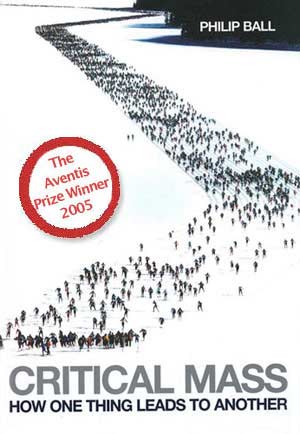 Critical Mass: How One Thing Leads to Another by Philip Ball
Critical Mass: How One Thing Leads to Another by Philip Ball
Tired of the civil war ravaging England, Thomas Hobbes decided in the seventeenth century that he would work out how society should be governed. But his approach was not to be based on the wishful thinking of Plato’s ‘Republic’ or Bacon’s ‘New Atlantis’; Hobbes used Galileo’s mechanics to construct a theory of government from physical first principles. His answer looks unappealing today: a dictatorial monarchy that ruled with an iron fist. But Hobbes had begun a new adventure: to look for ‘scientific’ rules that governed society.
BUY ON AMAZON
This programme was pursued, from many different political perspectives, by Adam Smith, Immanuel Kant, Auguste Comte, John Stuart Mill and others; but social and political philosophy gradually abandonded such a scientific approach. Today, physics is enjoying a revival in the social, economic and political sciences, as we find that large numbers of people can display behaviour eerily reminiscent of so many mindless particles, all interacting with one another.
This new physics of society has a different philosophy, however – not to determine how to govern or organize, but to examine the consequences of particular choices and to understand how our laws, institutions and customs arise from the effect each individual has on the others. This book is the first to bring these new ideas together and to weave them into the historical context of a scientific search for better ways to live.
Winner of the Aventis Prize for Science Books 2005.
Selected as a ‘Paperback of the Decade‘ by Blackwells.
click here to read more by Blackwells
Heinemann/Farrar, Straus & Giroux (2004) ISBN 0-434-01135-5
